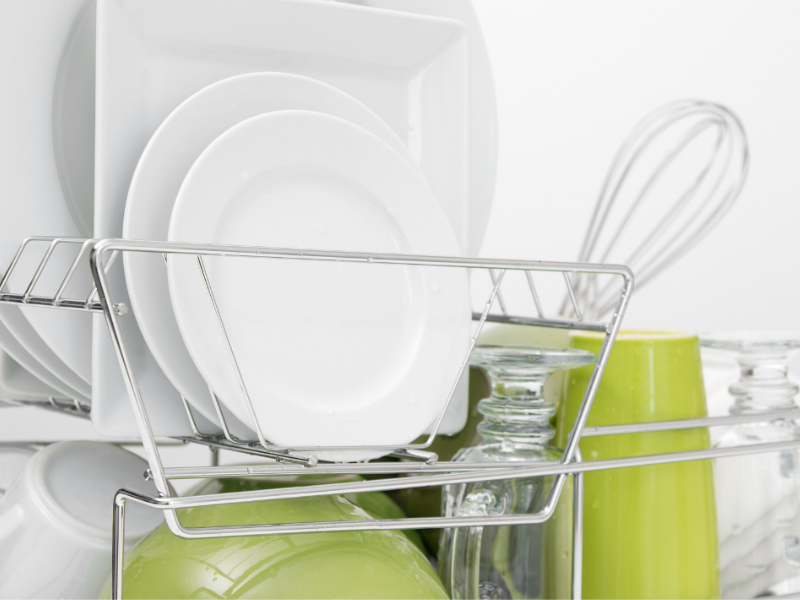Healthy eating on a budget takes a little bit of know-how and a few pro tips to make it easier. Save yourself some time and money.
1: Keep your kitchen clean.
The quickest way to lose the motivation to cook is to have to deal with a dirty kitchen. I know this can be annoying with roommates who may not be very tidy, but just take the initiative and be the one to keep the kitchen clean.
A clean place is so much nicer to come home to. Invest in a 10 pack of dishcloths and change them out often. Truly, having a clean dishcloth that I’m not afraid to touch makes a huge difference in whether or not I feel like cleaning the kitchen.
And having a clean kitchen makes me feel much more inclined to cook.
2: Learn to cook. Simple cooking methods go a long way.
Start with learning to make a few items that are quick, nutritious and don’t require a lot of special equipment. Eggs can be prepared dozens of wonderful ways. So can beans, pasta, homemade pizza, baked potatoes, soups. Each of these is budget friendly.
Hang around here and you’ll pick some of that up quickly.
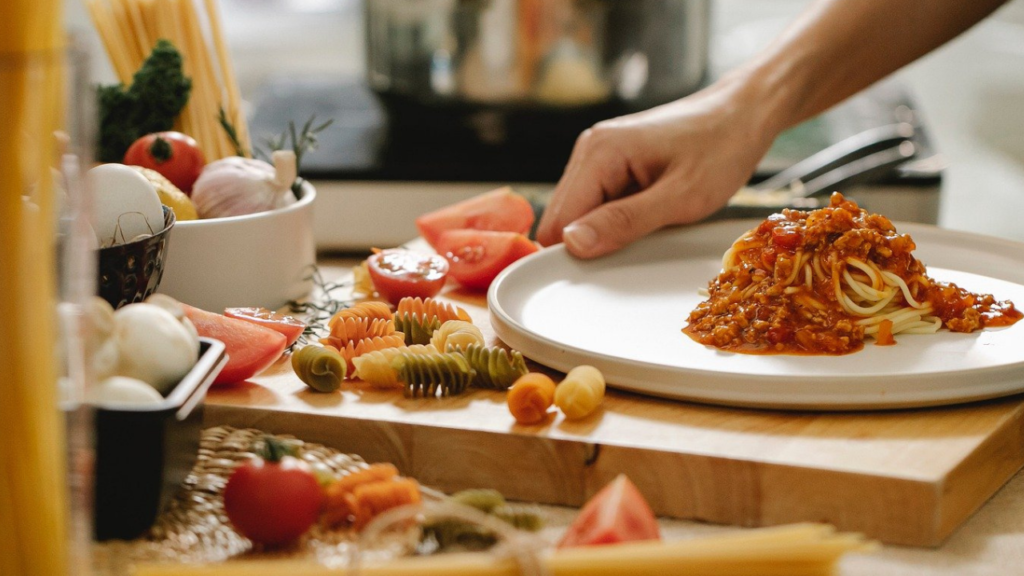
3: Develop a food budget
Develop a food budget based on the habits you have and the ones you want to develop.
4: Keep your kitchen stocked.
Know what staples you need and keep them on hand. This post has recommendations for you.
5: Have a plan for your week
Take a look at your upcoming week and note when you’ll need to pack a lunch or dinner, when you’ll be home in the afternoon to cook, and when to plan on a “hands free” or a “to go” meal.
Eating on a budget doesn’t mean that you’ll never eat out. It just means that you plan for it, you don’t end up eating out by default.
You decide ahead of time because you are in charge. For your meals at home, have a menu in mind and make a list based on what you have on hand and what you’ll need to pick up.
6: Keep track of what you already have on hand
Buying another bag of corn meal because you forgot that you already have some is frustrating and now you have to store 2 bags in a kitchen where storage space is probably already at a premium.
Double check the crisper drawer in your fridge to check for produce that you can use up. An exercise that I do periodically is place a sticky note on the side of my fridge – every time that I throw out food.
Then I jot down the approximate cost of the portion discarded. This helps me get a real picture of the cost of waste in my own kitchen and motivates me to 1. not overbuy and 2. use it up and 3. get really creative about using what I have before it spoils.
7: Store your food appropriately
Store your foods appropriately so they will not dry out or spoil. Also, when they are stored properly, they are a lot more appetizing and more likely to be eaten.
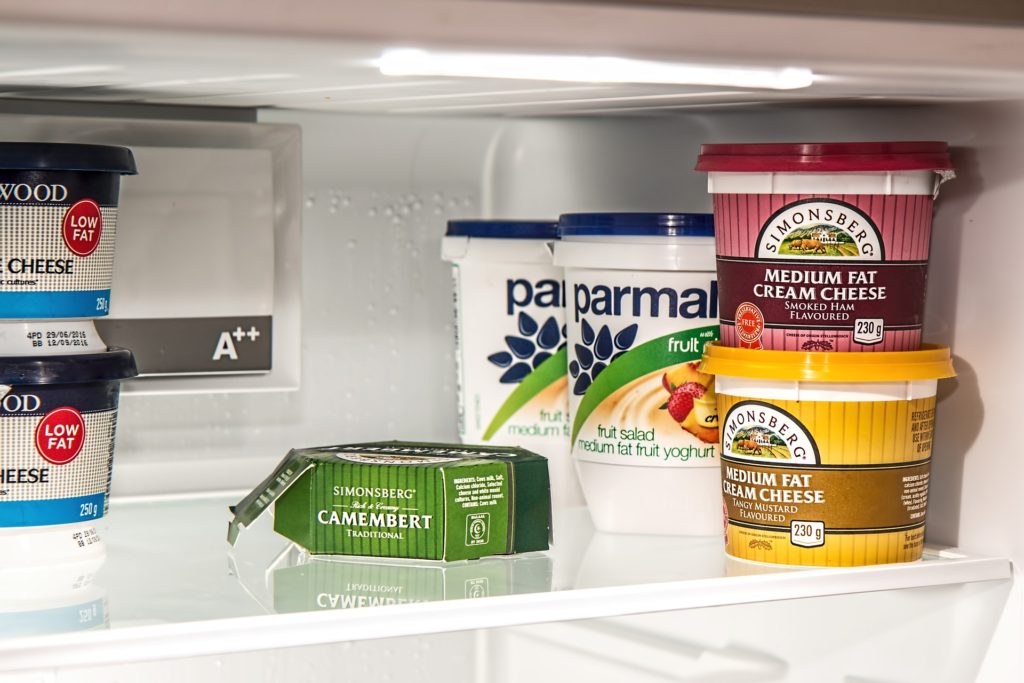
8: Double check your shopping routines
After a few grocery trips, you’ll learn the layout of your grocery store. Aldi or WinCo or Macey’s can be great options, if you have them. If you live in a small college town, you may not have many options for grocery shopping, but if you have an Amazon prime account, you may want to price the difference in ordering vs in-store shopping.
This can save time and reduce impulse purchases, as well.
9: Buy generic brands.
Sometimes a wholesale club store can seem like a bargain, but do the math. I find that it often doesn’t work so well for smaller budgets. The container sizes are so large that it is not practical or cost effective (if you end up throwing it out when you move). And then there is the issue of storing the larger containers. Not to mention the annual fee. So do the math before going that direction.
10: Learn to cook with a crockpot or oven
This allows you to opt for less expensive (and more budget friendly) cuts of meat, while creating melt-in-your-mouth nutritious meals.
These cuts of meat are typically tougher and require low, slow heat. (Think pulled pork or roast beef.) Master the technique, and you’ll impress your friends and reward yourself many times over.
11: Add high protein grains or legumes or even vegetables to meat to stretch it
High value protein sources like meats, nuts, and cheeses are usually the most expensive menus items that we buy. Our diets are typically much higher in protein than we need.
We can stretch our budgets and still get the protein that we need by adding legumes (dry, cooked beans) or grains (like rice) or vegetables to casseroles, taco meat, soups, stews, or even burger patties (black beans or minced mushrooms).
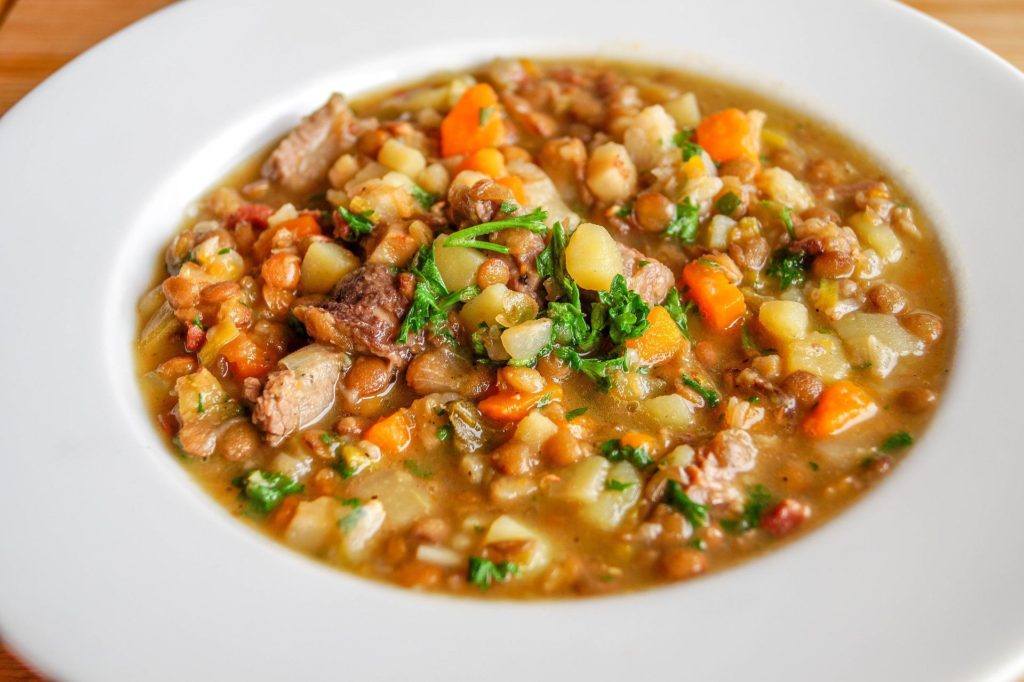
12: Plan for leftovers
Use leftovers to create new dishes (leftover taco meat turned into taco soup or enchilada filling or topping for nachos) or freeze them and grab them for an easy dinner the next week. Leftovers are great on the budget – almost like eating for free!
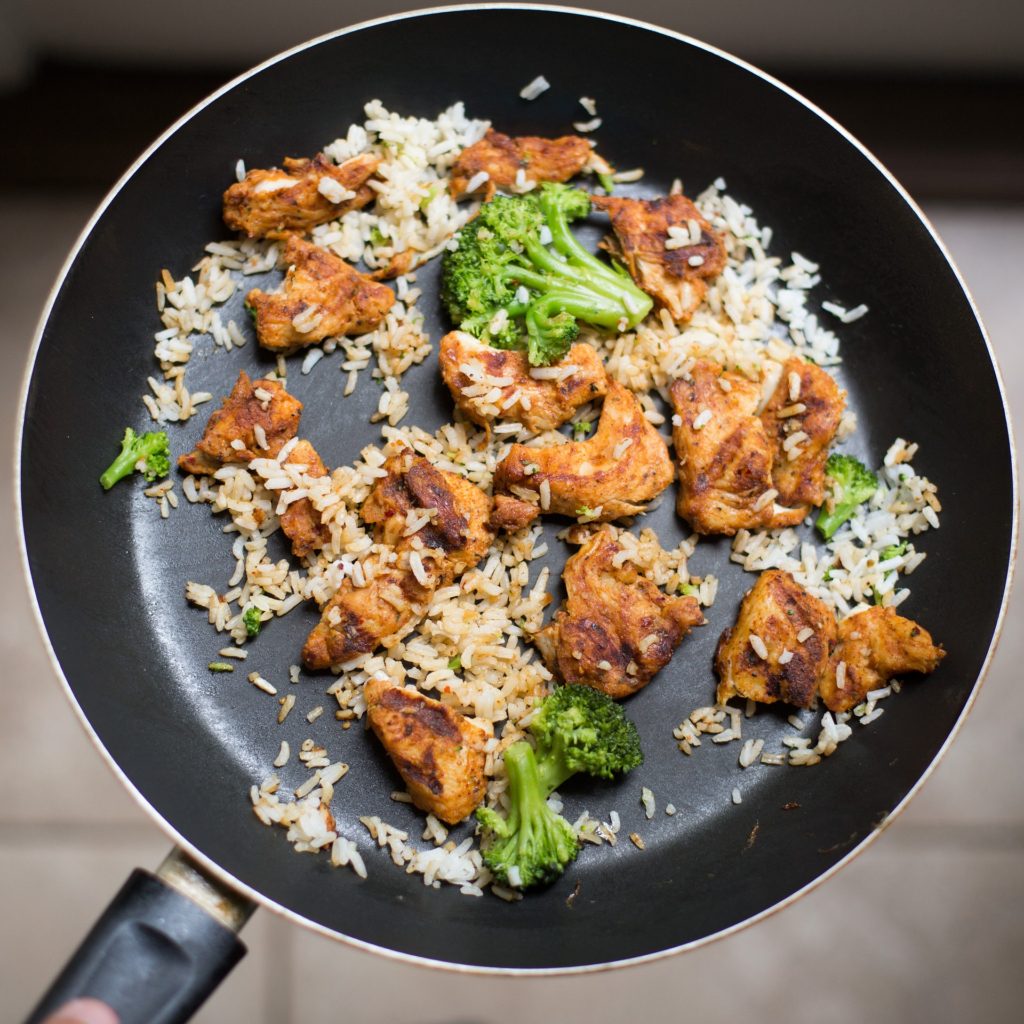
13: Be informed
Think that grabbing some Taco Bell is cheaper than cooking at home? Think again. Do the math and be informed.
Having the right information is motivating and helps us make better decisions. And when you do need to grab something on the road, have a healthy plan that nourishes you well.


